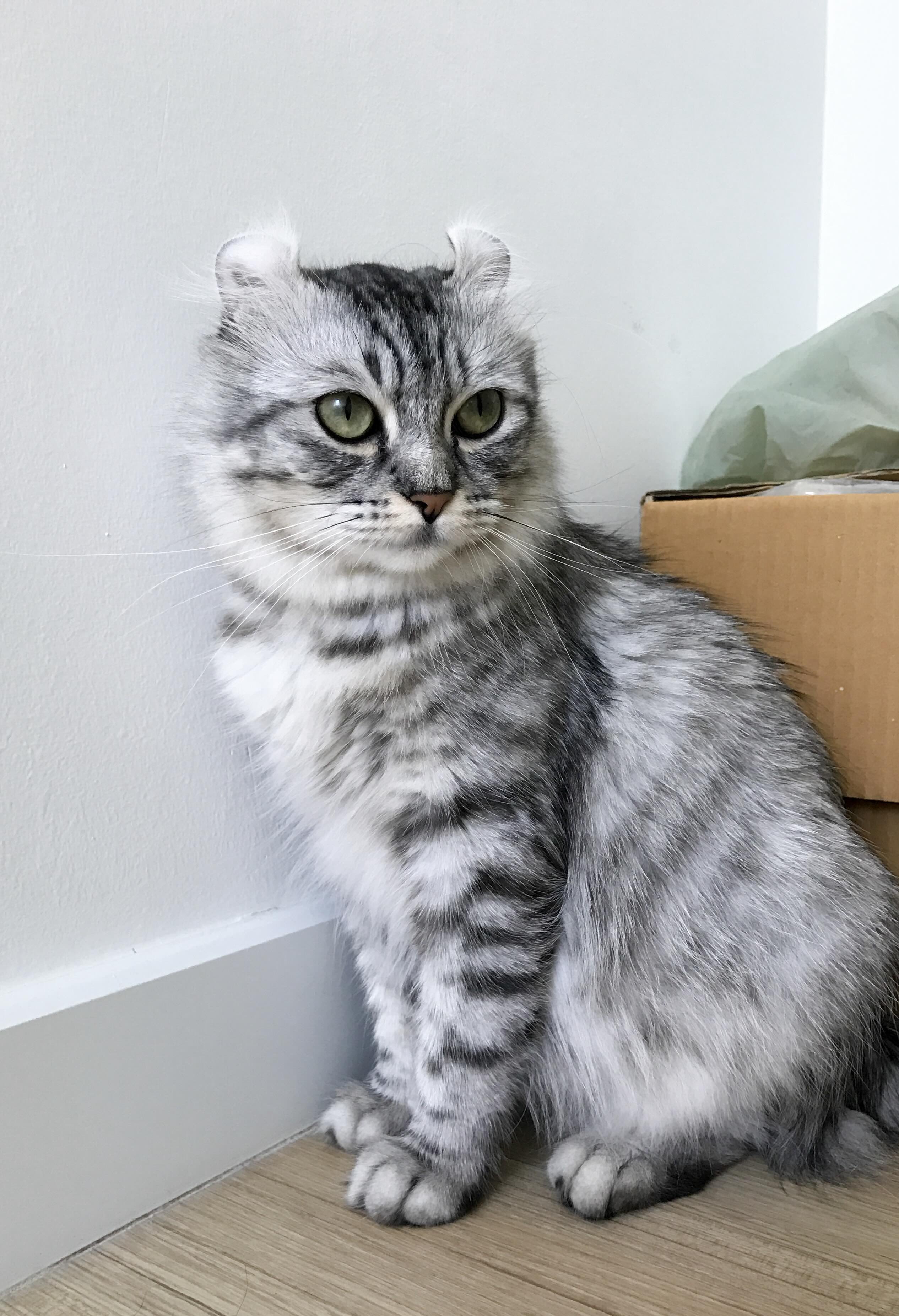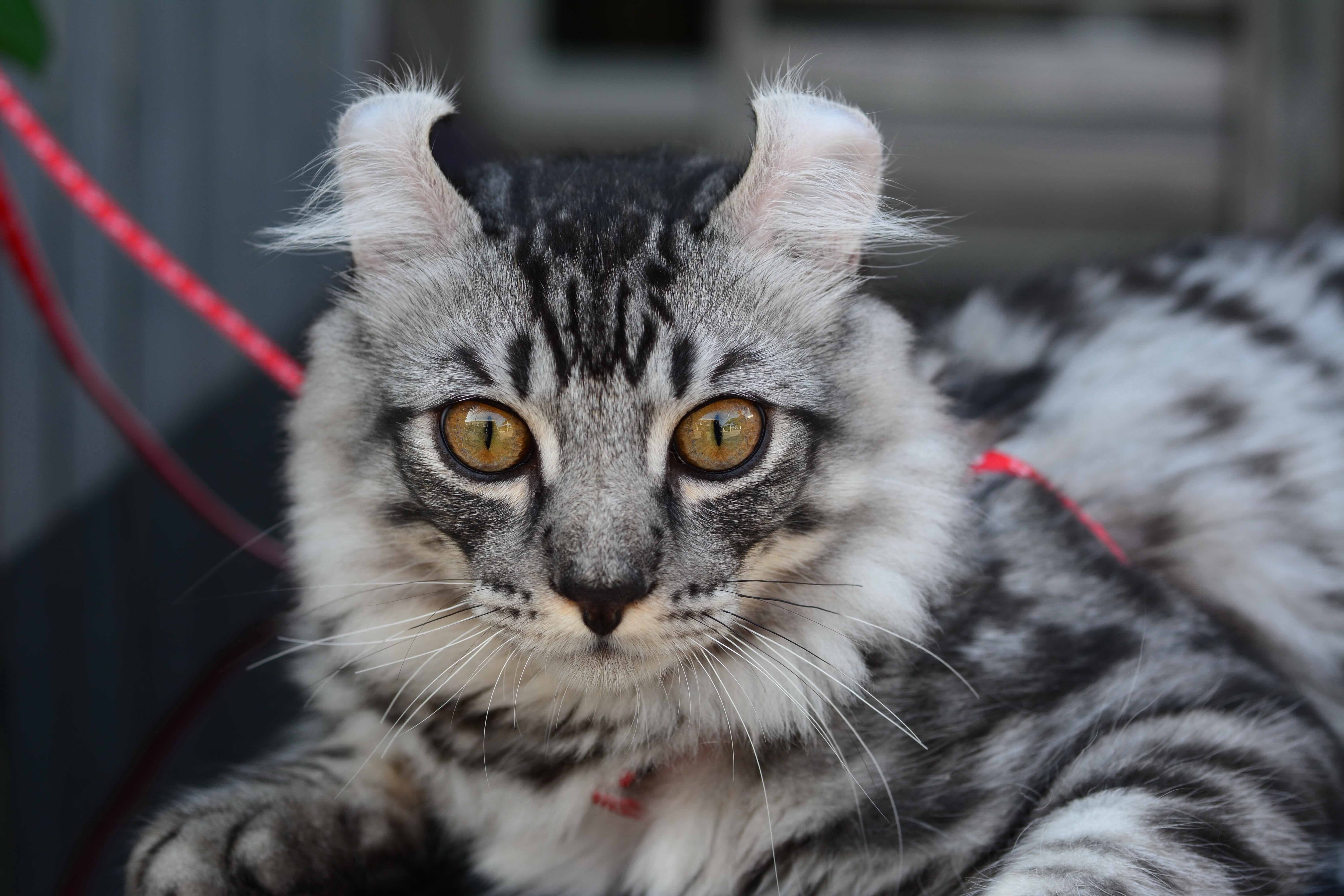American Curl
Adobe Stock/Ruthsarintre
The “curl” in American Curl refers to the cats’ most standout trait: ears that curl backward toward their head.
In 1981, a longhaired black kitten with curled ears appeared on the doorstep of Joe and Grace Ruga in Lakewood, California. This unexpected arrival was the very first American Curl. The Rugas named her Shulamith and soon discovered that her ears were a result of a spontaneous genetic mutation—and that the curled-eared trait could be passed on without any negative health effects.
News of the charming cat with the curled ears spread, and the breed quickly gained popularity. The International Cat Association (TICA) officially recognized Curls just a few years later, in 1987.
But the small to medium-sized cats (weighing 5–10 pounds and standing 9–12 inches tall) are so much more than their ears.
Caring for an American Curl
Lauren Witter, DVM, MS, veterinarian at Small Door Veterinary in New York, sums up the personality of the American Curl cat as affectionate and kitten-like.
“They are known for being people-oriented, and get along well with children and other pets,” she says. The fact that they remain so playful well into adulthood can be a surprising quirk to some pet parents.
Interactive play sessions and lots of appropriate surfaces to climb and scratch, like cat trees, shelving, and scratching posts, help keep these energetic cats satisfied—and out of mischief.
While their curled ears are not associated with any genetic health conditions and the breed is relatively healthy, American Curls are prone to more ear infections than other cats. Aside from routine ear care, Witter says pet parents can expect a low-maintenance grooming routine.
American Curl Health Issues

American Curls are generally healthy cats with a lifespan of 12–16 years. However, as with any cat breed, they do have a few common health concerns.
Pet parents might want to consider buying pet insurance before bringing home an American Curl kitten.
Ear Infections
American Curls are particularly susceptible to ear infections because their unique ear shape tends to trap more wax, Dr. Witter says. This creates a welcoming environment for excess bacteria and yeast to grow. Signs of ear infections in cats include an unpleasant odor, discharge, redness, and irritation of the ear.
Regular ear cleaning with a vet-recommended solution can help prevent infections. However, the ears of American Curls are more delicate than those of other cats. For proper handling and cleaning, pet parents can ask their veterinarian for an ear-cleaning demonstration.
Dental Disease
All cats, including American Curls, are at risk of developing dental disease.
The best defense against plaque and tartar buildup, and the bad breath that comes with it, is to brush your cat's teeth regularly—ideally daily to every other day, says Nancy Welborn, DVM, a veterinarian and associate professor of community practice at Louisiana State University School of Veterinary Medicine in Baton Rouge, Louisiana.
Pet parents can also visit the Veterinary Oral Health Council website for a list of products that have been proven to reduce plaque and/or tartar buildup, including:
-
Water additives and powders, such as ProDen PlaqueOff® Powder
According to Dr. Welborn, water additives work best on a freshly cleaned mouth, so consider starting them after a professional dental cleaning under anesthesia.
Obesity
Despite the American Curls’ playful nature, obesity is still common, as it is in most cat breeds. Regular play time with interactive toys (about two 15-minute play sessions daily) in addition to a well-balanced diet will help keep your cat at a healthy weight.
What To Feed an American Curl
Pet parents can feed their cats wet or dry commercial food, as long as it meets the nutritional recommendations set by the Association of American Feed Control Officials (AAFCO) and is formulated for their life stage (kitten, adult, or senior). You’ll know a cat food meets AAFCO’s nutritional recommendations if the bag or can includes a printed statement from the organization.
Cats are obligate carnivores. This means they need animal-based protein for essential nutrients and vitamins. To keep your American Curl healthy, choose a cat food that lists meat as the main ingredient (or second, after water, in wet food options).
Talk to your vet about the best food to feed your cat.
How To Feed an American Curl
Kittens require frequent meals, up to four per day, while healthy adult and senior cats can eat two meals a day. If you can't be home to provide multiple meals, consider an automatic feeder like the Cat Mate® C500. It can serve up to five wet or dry food meals.
How Much You Should Feed an American Curl
Cat food varies in calorie content, so experts recommend calculating your cat's daily needs and measuring their portions.
The food bag or can usually provides a starting guide, but for a personalized diet recommendation, talk to your veterinarian. They’ll consider your cat's age, activity level, and weight (both current and ideal) to create a tailored diet.
Treats shouldn’t make up more than 10% of a cat’s daily calorie requirements. This is especially important to avoid obesity, which this breed is prone to.
Nutritional Tips for American Curls
Most healthy American Curl kittens and adult cats don't require supplements if they're eating high-quality, balanced cat food.
However, if your cat develops health concerns that could benefit from supplements, your veterinarian can recommend the right ones. It's not recommended to add supplements to your cat’s diet without first speaking with your vet.
Behavior and Training Tips for American Curls
American Curl Personality and Temperament

Affectionate and playful toward people and other pets, American Curls often trail behind their loved ones, not to pester but to be a part of daily activity. They may even perch on willing shoulders for a better look at the world around them.
With a kitten-like energy that persists into adulthood, entertainment options such as crinkly tunnels and toy springs to chase should be a must. And while they love playtime, Witter says they also enjoy relaxing cuddle sessions with their humans.
American Curl Behavior
American Curls are not particularly needy or vocal, but they have an unmistakable curiosity and playful side. Without proper outlets for play and exploration, their natural tendencies to climb, perch, scratch, and pounce could easily be mistaken as mischief.
American Curl Training
Like most cats, American Curls are naturally drawn to the litter box, thanks to their instincts. If you encounter any litter box issues, consult your veterinarian to rule out medical issues.
Litter box training isn't the only skill your Curl is capable of. These intelligent and social cats can learn various tricks with positive reinforcement (using treats or praise to encourage behaviors). You might be surprised by what your American Curl can learn, from responding to their name to fetching.
Fun Activities for American Curls
-
Playing fetch
-
Perching up high
-
Taking shoulder rides
-
Watching birds or squirrels through a window
-
Playing with other pets
-
Cuddling
American Curl Grooming Guide

“American Curls can have either short or long coats with a silky texture,” Dr. Witter says. While the cats’ ears need a little extra special care, their overall grooming needs are relatively low-maintenance. Here’s what you can expect.
Skin Care
American Curl cats don’t require special skin care. If you notice changes such as dry, flaky skin, or itchiness and irritation, schedule a checkup with your veterinarian.
Coat Care
American Curls boast a single, silky coat that's less prone to matting and tangles compared to other breeds.
A weekly brush or comb session is all it takes to keep their fur looking sleek and healthy. This routine also minimizes loose fur floating around the home and sticking to your furniture and clothes.
Eye Care
American Curls have big, walnut-shaped eyes that give them an alert and inquisitive expression, Dr. Witter says. While they don't require specific eye care routines, be on the lookout for changes in your cat's vision or eye health, such as redness, cloudiness, or discharge. If you notice anything unusual, contact your vet.
Ear Care
Due to their unique shape, Curls have delicate ears that are prone to infections. Head shaking, scratching of the ears, and discharge can all be signs of an ear infection.
Gently cleaning your cat’s ears with veterinarian-approved cleaner can help reduce the chances of an infection.
Dental Care
It’s important to brush your cat’s teeth—ideally every day—to ward off dental disease. Talk to your veterinarian about the best cat dental products to use.
Considerations for Pet Parents
The American Curl's ears are undeniably charming, but there's more to consider before welcoming one home.
These social butterflies thrive on companionship and playful interactions. Early socialization with new sights, sounds, and people will help American Curl kittens grow into well-adjusted adults.
But don’t be surprised if your American Curl retains their playful spirit well into adulthood. So whether you’re welcoming home a kitten or adopting an older Curl, interactive toys and cat furniture should be on your new cat shopping list.
Ear infections are more common in American Curls due to their ear shape. Pet insurance can help with the costs of medication and other potential health issues.
American Curl
Are American Curl cats rare?
Yes, American Curls are a rare cat breed. Currently, there aren't any TICA-registered American Curl breeders in the United States. This means finding a reputable breeder might require more effort compared to other cat breeds. Due to their unique ears that make them extra desirable, American Curls may be difficult to find at your local animal shelter or rescue.
Are American Curl cats healthy?
Yes, American Curls are typically healthy cats. It’s thought that the curled ears in American Curls are a result of a genetic mutation that doesn't cause other health problems. This differs from the Scottish Fold, whose folded ears are also associated with painful joint issues.
How much does an American Curl cat cost?
American Curl kittens can cost $1,000–$2,500.
How do you tell if your cat is an American Curl?
The most recognizable feature of the American Curl is their curled ears. American Curl kittens are born with straight ears, but by 3 to 5 days old, their ears begin to curl. By 16 weeks, their ears should be fully shaped, curling backward.
